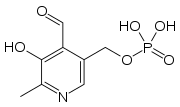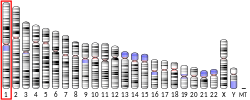Search results
Appearance
There is a page named "Heparin cofactor II" on Wikipedia
- Heparin cofactor II (HCII), a protein encoded by the SERPIND1 gene, is a coagulation factor that inhibits IIa, and is a cofactor for heparin and dermatan...12 KB (1,463 words) - 11:00, 31 July 2024
- Coagulation (section Cofactors)(and related coumarins) and heparin are the most commonly used. Warfarin affects the vitamin K-dependent clotting factors (II, VII, IX, X) and protein C...67 KB (6,817 words) - 22:55, 7 August 2024
- Antithrombin (section Antithrombin and heparin)binding site of thrombin. Antithrombin II (AT II) refers to a cofactor in plasma, which together with heparin interferes with the interaction of thrombin...45 KB (5,339 words) - 16:44, 26 July 2024
- allosteric interactions with specific cofactors. The X-ray crystal structures of antithrombin, heparin cofactor II, MENT and murine antichymotrypsin reveal...137 KB (14,301 words) - 09:55, 15 August 2024
- potentiates the antiprotease activities of both antithrombin III and heparin cofactor II simultaneously. Clinically, sulodexide is used for the prophylaxis...6 KB (583 words) - 22:58, 2 January 2024
- heparin cofactor II, which prevent clotting when it isn’t necessary. In contrast, batroxobin isn’t inhibited by antithrombin and heparin cofactor II....15 KB (2,037 words) - 21:44, 18 October 2023
- PMID 2164060. Pratt CW, Tobin RB, Church FC (April 1990). "Interaction of heparin cofactor II with neutrophil elastase and cathepsin G". The Journal of Biological...24 KB (2,860 words) - 07:04, 3 January 2024
- Fibronectin, Gentamicin, GIPC1, Heat shock proteins: gp96, hsp70, hsp90, heparin cofactor II, Hepatic lipase, ITGB1BP1, Lactoferrin, Lipoprotein lipase, LPL,...32 KB (3,564 words) - 02:52, 28 March 2024
- 2005). "Human factor H-related protein 5 has cofactor activity, inhibits C3 convertase activity, binds heparin and C-reactive protein, and associates with...7 KB (865 words) - 02:42, 26 April 2024
- activity. Heparin (unfractionated heparin) and its derivatives low molecular weight heparin (LMWH) bind to a plasma cofactor, antithrombin (AT) to inactivate...27 KB (3,353 words) - 09:39, 12 August 2024
- Thrombophilia due to elevated HRG; 613116; HRG Thrombophilia due to heparin cofactor II deficiency; 612356; HCF2 Thrombophilia due to HRG deficiency; 613116;...234 KB (18,877 words) - 15:43, 9 May 2024
- 776.377.715.085.394 – haptoglobins MeSH D12.776.377.715.085.450 – heparin cofactor ii MeSH D12.776.377.715.085.640 – orosomucoid MeSH D12.776.377.715.085...133 KB (7,397 words) - 16:43, 9 February 2024
- deamination of GABA, where it is a cofactor of GABA aminotransferase. Metabolism of ornithine. Pyridoxal phosphate is a cofactor of ornithine carboxylase. Transamination...26 KB (2,937 words) - 11:06, 4 June 2024
- vitamin K-dependent physiological anticoagulant, acts as a nonenzymatic cofactor to activate protein C in the degradation of factor Va and factor VIIIa...10 KB (1,054 words) - 02:57, 4 August 2024
- 776.124.790.106.394 – haptoglobins MeSH D12.776.124.790.106.450 – heparin cofactor ii MeSH D12.776.124.790.106.640 – orosomucoid MeSH D12.776.124.790.106...43 KB (3,780 words) - 16:51, 9 February 2024
- sulfate with a high molecular weight (25,000 Da) and affinity for the heparin II cofactor. Dermatan+sulfate at the U.S. National Library of Medicine Medical...4 KB (334 words) - 07:07, 2 September 2023
- sulfate biosynthesis and glycan structures - biosynthesis 1. It employs one cofactor, manganese. As of late 2007, 4 structures have been solved for this class...3 KB (308 words) - 18:25, 23 January 2024
- Fibrin is a cofactor for plasminogen activation by tissue plasminogen activator. Urokinase plasminogen activator receptor (uPAR) is a cofactor for plasminogen...15 KB (1,821 words) - 02:15, 10 March 2024
- (2005). "Human factor H-related protein 5 has cofactor activity, inhibits C3 convertase activity, binds heparin and C-reactive protein, and associates with...6 KB (719 words) - 21:17, 21 November 2023
- when the cofactor Mg2+ is present. The cleavage of this sequence results in 5' sticky ends: 5'-A |A G C T T-3' 3'-T T C G A| A-5' This type II restriction
















